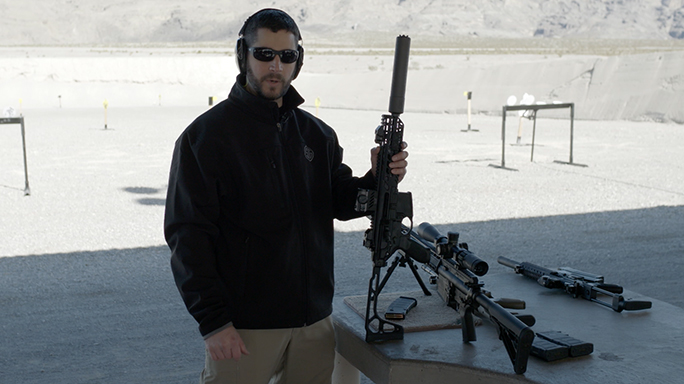Sig Sauer designed the MCX carbine from the ground up for adaptability. Shooters can easily change out the MCX’s stock, forend, barrel and even chambering in just a few minutes.
- RELATED VIDEO: New For 2016: Sig Sauer’s Redesigned SIG516 G2 Rifle
The upper receiver of the MCX is a monolithic design with a long, continuous top rail. It is also designed to accept handguards of different lengths. Currently, Sig offers short and long KeyMod handguards, which are also available in carbon fiber. The longer handguard acts as a continuation of the one-piece, 13-inch top rail, giving you over 17 inches of top rail to work with.
Advertisement — Continue Reading Below
Operators can quickly interchange barrels by loosening two screws on the upper receiver. Both 9- and 16-inch barrels are available, and you can quickly change from 300 BLK to 5.56mm NATO with a barrel/operating rod swap.
The 300 BLK barrels have 1-in-6-inch twist rates, while the 5.56mm NATO barrels have 1-in-7-inch twist rates. A 1-in-9.5-inch-twist 7.62x39mm barrel is also available, though it also requires you to change out the magazine.
Civilian model barrels will get a nitride coating regardless of their length or caliber. Military/ LE barrels can be chrome lined or nitrided depending on the customer’s requirements.
Advertisement — Continue Reading Below
- RELATED STORY: SIG716 DMR: Sig Sauer’s 7.62 Semi-Auto Sniper Rifle
Thanks to the MCX’s gas piston operating system, there’s no buffer tube. Instead, an attachment point at the rear of the receiver allows for different stocks to be fitted. You can choose from a side-folding, skeletonized SAS stock; a tubular, side-folding stock; or a telescoping stock. If you want to go the pistol route, Sig also offers its SBX Stabilizing Brace as an option.
For more information on the MCX and other products from Sig Sauer, please visit sigsauer.com.






















